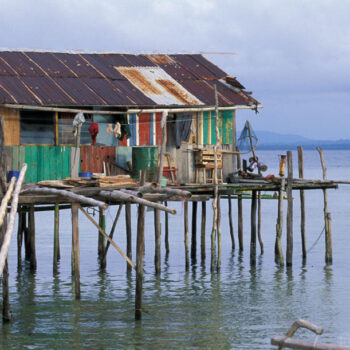The World Bank’s draft “Evolution Roadmap” has been roundly criticised for various omissions. Yet one thing in particular remained conspicuously absent: Paris alignment. This glaring oversight begs the question – what does Paris alignment across the World Bank’s core reform areas look like? A principle of “do good beyond do no harm”, clear reference to the temperature goals of the Paris Agreement, and lending capacity consummate with being a leader of the climate transition are critical ingredients.
The World Bank has committed to aligning all its operations with the Paris Agreement as of July 1st, 2023.[i] To this end, the Bank recently released its Paris alignment Instrument Methodologies. It is also due to release 12 Sector Notes before the end of the fiscal year in June. Unsurprisingly, Paris alignment seems a live topic that the World Bank is grappling with internally. However, with limited exposure to public scrutiny, there’s no telling how Paris alignment is being integrated into the World Bank Evolution process. To do this effectively, there are key principles the Bank must recognise across its “building blocks” of reform.
Vision and mission
Foremostly, Paris alignment needs to be explicitly considered in the Bank’s updated “Vision and Mission”. While even mention of the principle of “do no harm” would be welcome, the World Bank as a leading global multilateral lender needs to go beyond this. Committing to a principle of “do good beyond do no harm” (similar to that espoused by the Inter-American Development Bank) would represent a more fitting purpose for what should be a key piece in funding the urgent transition to a climate-safe world.
In fulfilling sustainable development pathways, climate-compatibility will be crucial. On top of reducing emissions to net zero by cutting World Bank fossil finance, this will require playing a leading role in fostering the transition necessary across all sectors. The importance of building climate resilience should also be explicit, beyond the existing nod to mitigation and adaptation.
Operating model
Critically missing from the Roadmap draft, is any reference to the temperature goals of the Paris Agreement. Aiming for a temperature trajectory limited to 1.5°C should be a key part of how the Bank operates.
Of course, the Bank must recognise the Paris Agreement’s “common but differentiated responsibilities” for signatories. However, as a leading global financier, it has the imperative to determine how the sum of its differentiated country operations keeps the world on track to the common goal of non-catastrophic warming.
To this end, rather than basing Paris alignment solely on country strategies, the World Bank should leverage its Country Climate and Development Reports (CCDRs) as tools with practical implications, beyond just diagnostic value. The summation of the CCDRs should in essence represent a bank-wide net zero pathway.
For its upcoming Sector Notes, the Bank must similarly integrate an overarching target of limiting warming to 1.5°C. Distinct mitigation, adaptation, and resilience components in each note are also a baseline requirement. A truly best practice approach would be to discuss structural resilience and deep decarbonisation explicitly, with reference to a net zero by 2050 pathway.
Financial capacity and model
Operationalising alignment with the temperature goals of the Paris Agreement will undoubtedly require increased financial capacity. Although substantive details were absent from the draft Roadmap, the Bank has confirmed that the Capital Adequacy Framework (CAF) recommendations will be considered as part of its evolution process.
To fulfil its potential as a leader of the climate transition, the Bank must increase lending capacity through ambitious adoption of quick and impactful financial reforms such as the CAF recommendations.
These steps might suffice in the short term, but there is no hiding from the reality that a capital increase will eventually be needed. This must go hand-in-hand with far greater private capital mobilisation, something that US-nominated World Bank presidential candidate Ajay Banga has already emphasised.
At the project level, there needs to be a thorough analysis of the available alternatives for all financing operations the Bank undertakes, justifying decisions. This should establish, transparently, the economic rationale of the chosen financing arrangements, with reference to prevailing technological and transition contexts and what changes would be required for alternatives to be deemed more economical.
Without these inclusions, the World Bank’s Evolution Roadmap will be lacking key ingredients. In the face of global challenges such as climate change, it can ill-afford its reform process being underbaked.
For further analysis on the World Bank’s level of alignment with the Paris Agreement, see E3G’s Public Bank Climate Tracker Matrix.
For more insights, see E3G’s proposal for the key focus areas for the World Bank and IMF Spring Meetings.
[i] This alignment date applies to IBRD, IDA, and 85% of IFC and MIGA, with the remaining 15% to be Paris aligned from July 2025.


